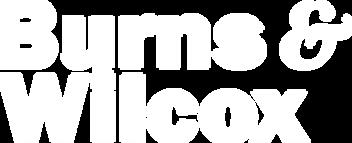




“Softening Hard Market” Effects
AI Risks & Benefits
Latest Trends in Rates, Capacity, and Terms & Conditions
Line of Business Insights: Personal, Commercial, Casualty, Professional Liability, Transportation, and Environmental
London Market Outlook

Drowning in the anxiety of hard-to-place risk? That’s when Burns & Wilcox rises to the top. Whether Commercial, Professional or Personal, we have a sea of tailor-made solutions to help make even the most unconventional coverage feel like smooth sailing.

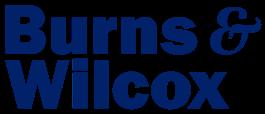

Contributor:
Paul G. Smith
Group Senior Vice President
H.W. Kaufman Group New York, NY
Click here for contact details >>
There is an emerging new term to describe the Property & Casualty (P&C) environment today: a “softening hard market.” This refers to the fact that some lines of business, such as Property, show signs of moderation, while most Casualty sectors remain firm and Professional Liability Insurance lines are competitive.
While every sector is different, recent industry conferences support this “softening hard market” perspective. For example, the Wholesale & Specialty Insurance Association (WSIA) Annual Marketplace report revealed that total surplus lines premium reached $46.2 billion for the first six months of 2025—a 13.2% increase over the first six months of 2024.
Chatter from the Monte Carlo Rendezvous Reinsurance Briefing in September suggests a softening hard market exists in the reinsurance sector as well. Experts anticipate near-term stabilization in reinsurance with modest restructuring of treaties and rates likely to continue to rise, albeit at a muted pace.
This Q4 P&C report outlines an increased market focus on Excess & Surplus (E&S), including developments at the state regulatory level, and examines the ongoing impact of artificial intelligence (AI) and technological innovation across the industry. Throughout this report, you will find in-depth analysis and timely updates across Commercial, Personal, and Professional Liability Insurance— including evolving trends in Property, Casualty, Cannabis, Habitational, Hospitality, and more.
The growth of the E&S market is drawing increased attention from some state insurance commissioners. While it is too early to determine the impact on rates and capacity, this is a trend worth monitoring in the coming months.
A September 2025 article in Insurance Insider highlights this development, noting that varying statelevel strategies could complicate compliance. For example, Florida recently removed its Diligent Effort Rule, allowing brokers and agents easier access to the E&S market. In contrast, New York’s per-risk search mandates continue to hamper the flow of E&S business.
• A “softening hard market” is shaping the current landscape, with some sectors seeing rate relief. Inflation and underwriting discipline remain central themes.
• The E&S market continues to demonstrate significant growth. WSIA recently reported total surplus lines premium reached $46.2 billion for the first six months of 2025—a 13.2% increase over the same period in 2024.
• Property rates are easing in certain regions; however, CAT-weather events and inflation continue to drive strict underwriting.
• Casualty markets face ongoing rate pressure, with Transportation under remediation and creative solutions like quota share placements and alternative risk transfer supporting capacity.
• Professional Liability remains competitive, with capacity generally available; however, hard areas persist in sectors like Healthcare Liability.
• Claims costs are rising due to inflation, litigation, and economic uncertainty, making proactive risk management and close collaboration critical.
• AI and technology are transforming underwriting and claims, improving efficiency but introducing new exposures. The human element remains essential for complex decision-making and maintaining trust.

The ability of AI to automate certain processes and information is now embedded in the P&C market. However, AI is not making coverage decisions or eliminating the need for human underwriters. Insurance professionals continue to make policy-related decisions, supported by access to more timely and detailed information than ever before.
When implemented effectively, AI provides a more efficient experience for both clients and industry professionals. Many online and cloud-based tools now support the need for convenience, from the use of e-signatures to speed up the process of finalizing coverage, to more effective and timely collection of client data. For example, email-based submissions with multiple attachments are being replaced by highly efficient, API-driven platforms. Burns & Wilcox is at the forefront of these technological transformations, designed to improve turnaround times and ensure quality data collection strategies.
Additionally, a traditional policy within any Liability lines can encounter several issues when it comes to a claim due to autonomous equipment. Such errors can include software glitches or a “bad” algorithm. Deciding who was negligent or at fault becomes more difficult when AI and other advanced technologies are involved. We will keep an eye on this space as the broader Professional Liability marketplace addresses these emerging exposures.
The general view of rates has not changed much in the last quarter, but the “softening hard market” seems to be the most appropriate definition. Rate variability is largely based on the type of coverage, with some stressed segments experiencing higher increases.
Premiums rise for many reasons, including standard inflationary trends, similar to the price of other goods and services.
During the Burns & Wilcox P&C Market Outlook: Q4 2025 webinar hosted on October 9, 2025, our industry-leading subject matter experts delivered valuable insights into the evolving insurance landscape.
Click here to view the recording >>
In the following pages, our experts delve deeper into specific sectors within P&C, explore trends, and share outlooks for the remainder of 2025 and into 2026.
Other sectors, such as Cyber, may see slight decreases. Howden Re recently confirmed that “hard market softening” is occurring within reinsurance as well, depending on local market trends.
Market conditions vary, but there are signs that capacity is more readily available in several sectors now than in recent years. For most insureds, capacity does not seem to be an issue outside of challenging areas such as Liability related to Liquor, Assault & Battery, and Firearms. Still, the rates and terms and conditions available in policies will vary, giving brokers and agents opportunities to garner increased trust from new and renewing clients when working with Burns & Wilcox.
Terms & Conditions (T&C) have generally stabilized across the market after several years of increased underwriting discipline. Given this recent trend, it is unlikely that T&C will significantly loosen in the Property & Casualty sector.
For example, the Personal market is often experiencing higher deductibles for wind, wildfire and all other perils (AOPs), along with stricter coverage terms and more scrutiny on property condition, roof age and wildfire/flood exposures.
There have been informal discussions among industry stakeholders about whether T&C language has become overly restrictive and whether any giveback could occur. It is too early to tell at this point. However, the expectation is that underwriting strategies will mostly remain disciplined for the foreseeable future. For example, underwriters often require higher deductibles with wind- and flood-related policies, and brokers and agents should expect that to continue.


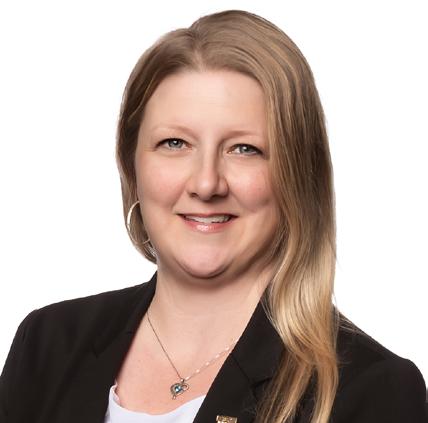
Contributor:
Danielle Alessandrini Associate Vice President, Underwriting Director, Personal Insurance Burns & Wilcox
Farmington Hills, MI
Click here for contact details >>
Carriers remain focused on long-term profitability and disciplined underwriting, with insurance-to-value (ITV) continuing to be a critical topic. Ensuring accurate replacement cost values is essential for proper risk assessment and policy pricing.
Natural disasters, including wildfires, flooding, and convective storms, are occurring more frequently and are harder to predict. These events have driven up repair and rebuilding costs, resulting in higher insurance payouts and changing carrier appetites. As a result, higher deductibles for wind, wildfire, and AOPs, stricter coverage terms, and increased scrutiny on property condition, roof age, and wildfire/flood exposures are now common.
Clients and carriers are responding with risk management strategies such as home hardening (e.g., water shutoff devices, defensible space in wildfire areas), and programs like wind and wildfire deductible buybacks to offset higher out-of-pocket costs.
The market is in a transition phase. While E&S Homeowners rates have risen over the past few years—often with doubledigit increases due to loss costs, CAT exposure, inflation, and admitted market retreat—recently, more competitive pricing and flattening rates are emerging as E&S companies compete for better quality risks. Rate momentum is slowing in areas with stable loss experience or excess capacity, and the market is becoming more nuanced, with geography, underwriting quality, and risk appetite playing a larger role.
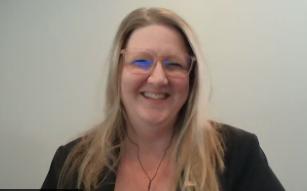
Admitted markets continue to be selective in their appetites for CAT exposed property, leaving a significant number of higher-valued homes in the E&S space. Burns & Wilcox has responded with exclusive products such as the Atain HighValue Homeowners program, a contents-only policy for larger homes, and the expansion of the California Wrap product into Colorado. The Burns & Wilcox Flood Practice remains unaffected by National Flood Insurance Program (NFIP) changes and offers private Flood market solutions for both Commercial and Personal risks.
Brokers and agents are encouraged to partner with wholesalers who provide expertise and creative solutions, submit thorough applications, and maintain open conversations with clients about price, deductibles, and terms to secure the best possible coverage.

Risk management strategies such as home hardening and programs like wind and wildfire deductible buybacks can offset higher out-ofpocket costs.

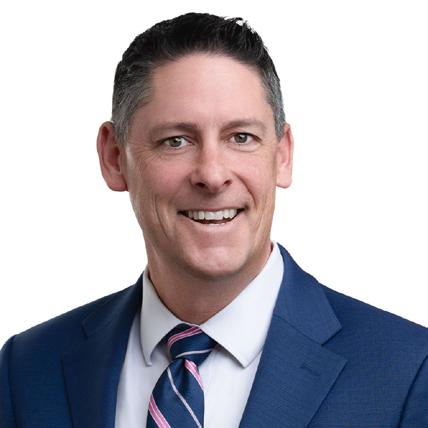
Contributor: Obie Scott Associate Managing Director Burns & Wilcox Sacramento, CA
The weather events impacting Personal Insurance—such as wildfires, flooding, and convective storms—are also affecting the Commercial Insurance marketplace. While the Atlantic hurricane season has been tame as of mid-October, clients are advised not to rely on optimism alone. As convective storms spread across the U.S., some deductibles are rising as carriers focus on profitability. Brokers and agents have a responsibility to act as risk engineers on behalf of their clients so that they are not underinsured.
Property rates are moderating. Although increases are often absent as compared to last year, rates remain higher than in 2022. One reason for limited rate movement in 2025 is the lack of weather-related catastrophic (CAT) events over the last several months, particularly since the March 2025 flooding in the Rio Grande Valley of Texas and the Los Angeles-area wildfires early in the year.
However, that could change quickly. A single CAT event could send Property rates higher, and the Atlantic hurricane season runs through November 30.
Most major Commercial lines saw a slowdown in average premium renewal rate increases in August compared with July, according to Ivans Insurance Services. For example, the Commercial Auto August renewal rate change was 7.19%, down from 7.96% in July.
Regardless of market segment, a couple of themes remain true:
• Carriers require accurate valuation of properties
• E&S remains a popular option for many clients because of the flexibility offered by freedom of rate and form

Parametric coverage is gaining traction as a flexible solution for weather-driven property losses, offering pre-determined payouts when specific event thresholds—such as wind speed or flood level— are met. For example, if a hurricane reaches a certain wind speed or rainfall exceeds a set amount in a defined area, the policyholder receives a fixed payout, regardless of the actual loss incurred. This approach enables faster access to funds after a catastrophic event and helps clients manage uncertainty.
Burns & Wilcox partners with leading Parametric providers and subject matter experts to help clients evaluate and implement these solutions—including options such as buydown deductibles—as part of a comprehensive property risk management strategy.
Rate increases in General Liability are less frequent at a macro level, but rates remain highly dependent on location and class. Typically, rates are lower in states with less litigation. In contrast, states with an active plaintiff’s bar and more sympathetic juries— such as Illinois and New York—tend to see higher rates.
The U.S. Property & Casualty market combined ratio is improving, according to Business Insurance and Fitch Ratings. The current combined ratio sits at 96.4%, representing a 1.25% improvement across the broad P&C market. This improvement may be contributing to softening in some areas.

Insurance challenges in the Hospitality sector are increasing due to litigation risks and operational exposures, as discussed in recent reports.
Coverage is particularly difficult to place on a standalone basis for Liquor Liability. To improve the likelihood of full coverage, a Liquor policy is often bundled with General Liability.
Carriers favor insureds that serve liquor when risk mitigation strategies are implemented such as:
• Shortening liquor service hours
• Increasing food-to-alcohol sales ratios
• Reducing dance floor size and limiting live entertainment
These strategies may positively influence underwriting decisions.
High-end restaurants may face higher premiums despite a lower propensity for alcohol-related claims, driven by elevated alcohol sales from more expensive liquor and wine offerings.
Venues hosting large gatherings, such as concerts and sporting events, face heightened scrutiny due to increased risks involving firearms. Targeted shootings at large gatherings across the U.S. have led carriers to increasingly apply exclusions for firearms-related incidents.
Assault & Battery exclusions are becoming more common in both Hospitality and Habitational sectors, particularly for large residential complexes. These properties often face higher premiums, sub-limits, and elevated deductibles due to rising claims and increased underwriting scrutiny.
Brokers and agents must carefully review policies, particularly in the Hospitality and Habitational sectors, to identify coverage limitations for their clients. Partnering with Burns & Wilcox helps navigate these complexities and secure comprehensive coverage.
Two dozen states and the District of Columbia now allow small amounts of marijuana for both recreational and medical use, according to the Pew Research Center. Despite these changes, cannabis remains classified as a Schedule I drug under the federal Controlled Substances Act. This regulatory complexity means cannabis coverage is almost entirely within the E&S market, resulting in variability with rates and capacity.
Securing coverage in the standard market can be challenging. E&S insurance providers offer tailored solutions for cannabis professionals—including growers, shippers, logistics officials, dispensary retailers, and more. For this reason, the Cannabis market likely will remain in the non-admitted space for now. Burns & Wilcox offers access to the top markets, including its sister company Atain through RB Jones for insureds within this sector for coverage so that clients will not be left “holding the bag.”
Burns & Wilcox has several unique offerings across lines of business to aid brokers and agents. Atain and RB Jones, both affiliated companies within H.W. Kaufman Group, offer specialized solutions: Atain provides customized coverage, underwriting, and claim expertise, while RB Jones partners with brokers and agents to deliver specialized insurance solutions such as Marine. Burns & Wilcox Global Solutions is our Londonbased brokerage, specializing in open brokerage and contract binding with Lloyds syndicates and London markets for complex transactions.
As the Commercial Insurance market continues to evolve, brokers and agents who partner with a world-class wholesaler such as Burns & Wilcox and leverage innovative solutions are best positioned to help clients navigate emerging risks and secure comprehensive coverage.


The Burns & Wilcox Professional Liability team met with more than 60 carriers at the 2025 WSIA Annual Marketplace in September. Those discussions revealed several trends:
• MGAs and InsurTechs continue to be relevant and valued
• Submission volume remains high, with strong interest in securing manuscript endorsements
• Capacity is readily available in most areas
That said, there are several hard market areas in Professional Liability where clients increasingly depend on E&S options to secure coverage that is often unavailable through standard markets. These areas, including medical malpractice, healthcare, adoption, and foster care, require specialized underwriting and flexible solutions that E&S carriers are uniquely positioned to provide.
Healthcare remains a key focus, with carriers expanding their appetites for Liability coverage across group homes and senior living facilities. Standalone Abuse and Molestation (SAM) coverage is also gaining traction, often with lower limits.
Emerging exposures are driving new product development and coverage enhancements. One example is the rise of ketamine clinics, which present unique risks outside traditional underwriting appetite. Ketamine is increasingly used for mental health and other disorders, leading to the rapid growth of thousands of clinics nationwide. Standard General Liability policies often exclude ketamine-related exposures, leaving these clinics vulnerable. In response, Burns & Wilcox has developed tailored policies through its global solutions team to address the specific risks faced by ketamine clinics, ensuring they have access to the specialized coverage they need.
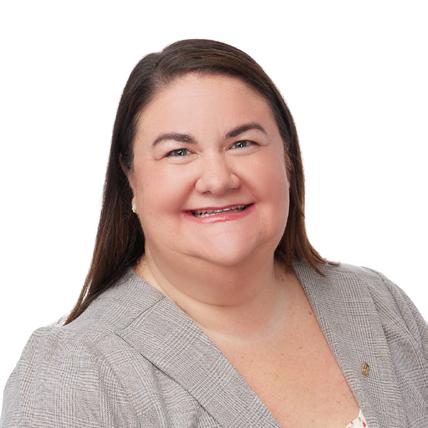
Contributor: Erica Rangel Associate Managing Director Burns & Wilcox Chicago, IL
Competitive rates in the E&S space are also attracting manufacturers seeking coverage to bridge gaps between financial loss and General Liability—highlighting the broader value of specialty solutions in today’s market.
Coverage for AI and technology-related exposures across industries is another growing trend. AI introduces new risks such as more sophisticated social engineering schemes, algorithmic bias, and unintended autonomous decision-making. As the industry works to better understand how losses in this space evolve, AI remains a key emerging exposure.
Packaged or bundled policies are also on the rise. These modular products help brokers and agents create “stickier” policies, offering more opportunities to cross-sell and manage risk effectively.
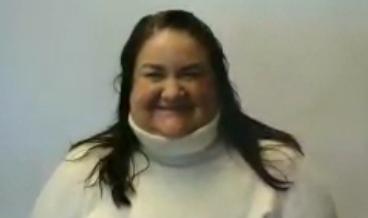


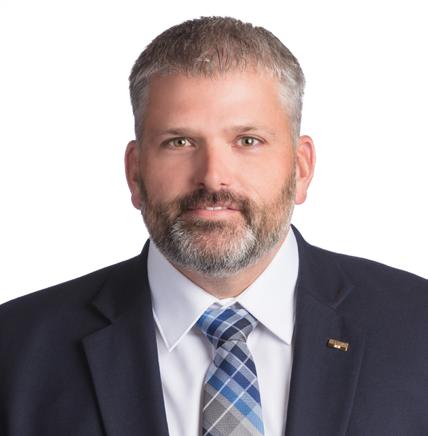
Contributor:
Mark Mills
Manager Transportation
Burns & Wilcox
Salt Lake City, UT
The Commercial Auto marketplace is facing headwinds as we move into Q4. Loss trends are rising, and both Liability and Physical Damage rates are climbing.
• Liability losses are increasing under the pressure of social inflation and third-party litigation funding
• Physical damage losses are being driven by inflation and tariffs affecting the cost of replacement parts
• A shortage of experienced drivers is contributing to increased severity across all lines of business
Most Transportation carriers are operating with a combined ratio over 100.
Despite these challenges, there are signs of opportunity. The Cargo market is softening, with expanding capacity and more competitive rates from monoline carriers. With new entrants in the space, it is essential to ensure insureds have coverage that aligns with their exposure.
Carriers are offering premium relief to insureds who demonstrate a commitment to safety by implementing compliance technologies and telematics—and sharing that data with insurance companies.
When coaching insureds through the Transportation marketplace, partnering with Burns & Wilcox and leveraging our experience and broad market access to secure the right coverages is a win-win.
Carriers are offering premium relief to insureds who demonstrate a commitment to safety by implementing compliance technologies and telematics .


As 2025 enters its final quarter, the Environmental Insurance sector is undergoing significant transformation. Driven by regulatory shifts, emerging contaminants, and increased competition, the market is both dynamic and challenging for carriers, brokers, and insureds alike.
The Environmental Insurance market remains highly competitive, with a surge of new carriers entering the space. These entrants are offering aggressive terms and pricing to gain market share, prompting incumbent carriers to reevaluate their underwriting strategies. Contractor Pollution Liability (CPL) policies, in particular, have become a focal point due to their profitability and relatively straightforward underwriting requirements.
The Environmental Insurance market remains highly competitive , with a surge of new carriers entering the space.
This influx has led to a soft market in certain segments, especially for small businesses, where premiums for integrated Casualty products—combining CPL or Pollution Legal Liability with General Liability—have dropped to as low as $1,500.
While Primary coverage remains competitive, the Excess market continues to be challenging. Carriers are reducing their Excess limit capacity—from historical highs of $25 million to current norms of $5–$10 million. This contraction is largely attributed to rising claims costs and nuclear verdicts, particularly in states like Texas.
Additionally, indoor air quality issues (e.g., mold, legionella) continue to gain attention as litigation and regulatory actions increase. These emerging risks are reshaping carrier appetites and influencing policy terms.
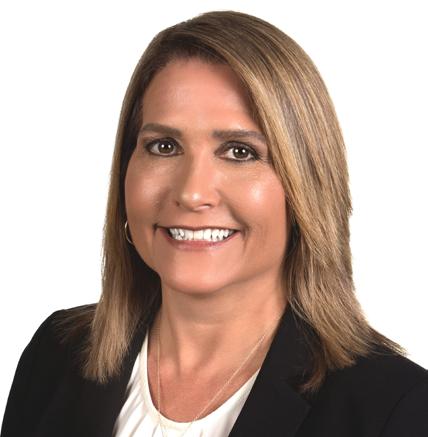
Contributor:
Beth Linton Vice President
Environmental Brokerage Burns & Wilcox, Brokerage Division Atlanta, GA
Click here for contact details >>


In Q3 2025, the Canadian Residential Property Insurance market showed continued resilience, with easing rate pressure and expanding capacity across both standard and specialty segments. While catastrophic (CAT) activity— particularly wildfires—remains a factor, overall property losses have been lower than expected.
Recent wildfires in Newfoundland are still being assessed and may affect the competitive rate environment in that region. However, the broader market has benefited from fewer highimpact claims. Many fires occurred in less populated or lowervalue areas, and where claims did arise, revised deductibles, reduced coverages, and improved mitigation strategies (e.g., defensible space, fire-resistant materials) helped protect profitability.
As a result, competition has intensified across many provinces, including cautious re-entry into previously hardhit or high-risk zones. In traditionally stable areas, pricing remains favorable and underwriting appetites have broadened, contributing to further softening—even in select higher-risk territories.
Standard insurers remain selective, but with reduced claim severity and lower-than-forecast CAT losses, nonrenewal activity has slowed. This shift offers a reprieve to homeowners in exposed areas, especially those who have adopted mitigation strategies and can demonstrate strong risk management.
Despite signs of stabilization, challenges persist. Inflation and rising reconstruction costs continue to strain affordability and capacity in the standard market—particularly for homes with prior losses, custom construction, multiple lenders, or non-traditional usage (e.g., short-term rentals, co-ownership, home-based businesses).
As a result, demand for MGA and specialty market solutions remains strong and is expected to grow. Clients and brokers continue to seek flexible, creative coverage for properties outside the standard market’s appetite.
Looking ahead through year-end, we expect:
• Continued competitive pricing and increased capacity in low- and moderate-risk areas
• A more tempered, data-driven underwriting approach in high-risk regions, supported by lower-than-expected CAT losses
• Sustained demand for specialty market solutions to bridge gaps in the standard market
To support this evolving landscape, Burns & Wilcox is proud to launch a second specialty Homeowners’ product. This nationwide offering delivers broader coverage and competitive pricing for hard-to-place Personal risks—including those with elevated insured values, complex underwriting needs, or prior claims.
With two distinct new products now available this year, we are better equipped than ever to provide brokers with the tools and flexibility needed to succeed in a rapidly shifting Property Insurance market. Our underwriting team remains focused on delivering responsive, expert-driven solutions across all regions of Canada.
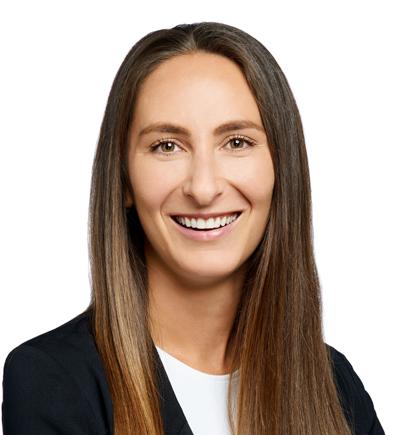
Contributor:
Michelle
Allemang Manager, British Columbia National Product Leader Personal Insurance Burns & Wilcox Vancouver, BC
Click here for contact details >>

As we move into the final quarter of the year, the Canadian Commercial Insurance market remains defined by strong capacity and heightened competition. While standard carriers are increasingly open to writing more challenging risks, Burns & Wilcox remains a trusted partner for fast, flexible solutions tailored to complex and niche exposures.
We have broadened our product suite with several new, targeted programs designed for hard-to-place commercial businesses:
• Contractors: Built for small to mid-size contractors, this program features entry-level premiums starting at $450. Target classes include Landscapers, Janitors, Excavators, General Repair Specialists, Electricians, and others.
Commercial General Liability (CGL) limits up to $5 million, with higher limits available upon request. New ventures are welcome.
• Hospitality: Comprehensive package policy, competitive pricing, Liquor up to 85%, Property capacity up to $15M. Enhanced commission incentive for October – December 2025.
• Security Services: CGL and Errors & Omissions (E&O) package policies for a range of services including Patrol & Guard, Alarm Installation, Locksmiths, and Bodyguards. Premiums begin at $850.
• Welders: Coverage includes Oil & Gas Contractors, Supervisors/Inspectors, Mobile Welders, and more. Premiums start at $1,190. CGL limits up to $5 million, with higher limits available upon request.
What differentiates these programs is our ability to offer competitive pricing, broad coverage, and direct underwriting authority—resulting in faster turnaround times and eliminating delays tied to Offer & Accept (O&A) markets or London placements.
We have also enhanced our endorsement options to include:
• Full sewer backup limits
• Property extensions such as building by-laws, extra expense, inflation protection, and glass coverage
• Casualty extensions including Employee Benefits, Product Recall, Sudden & Accidental Pollution, and E&O
• Add-on products for Cyber and Legal Expenses
Burns & Wilcox remains focused on delivering innovative products, competitive pricing strategies, and exceptional service—ensuring brokers receive timely, expert support to help them win and retain business in a dynamic market.
The Construction Insurance market is currently soft, with persistent downward pressure on rates and capacity. Concerns around tariffs and inflation are contributing to supply chain disruptions and rising material costs—factors that could significantly influence the Construction sector’s trajectory. We are closely monitoring these developments and evaluating their impact on evolving insurance needs.
In light of these challenges, our strong product portfolio and commitment to service excellence position Burns & Wilcox as the go-to partner for Construction risks of all sizes. We are also advancing our Builder’s Risk program to deliver greater value and flexibility for brokers and their clients.
Contributors:


Patricia Sheridan Managing Director Burns & Wilcox Toronto, ON
Click here for contact details >>
Steven Hrab Director, Construction Burns & Wilcox Toronto,
ON


Contributor:
Danion Beckford
Senior Underwriter
Professional Liability
Burns & Wilcox Toronto, ON
Click here for contact details >>
The Professional Liability Insurance landscape in Canada continues to evolve in response to the persistent challenges of a soft market. Burns & Wilcox remains proactive by expanding partnerships with emerging markets and refining our offerings to better support our broking partners—both in coverage breadth and pricing flexibility.
Demand for customized solutions in Architects & Engineers (A&E) and Miscellaneous Errors & Omissions (E&O) remains strong. To meet these needs, we have strengthened partnerships with both established and new markets, allowing us to deliver more innovative and competitive solutions tailored to the unique risks professionals face. Our internal underwriting capabilities have been well received, particularly for their ability to enhance coverage comprehensiveness.
Demand for customized solutions in A&E and Miscellaneous E&O remains strong.
Additionally, we continue to see momentum in the health and wellness space, with new business opportunities emerging. Our commitment to delivering exceptional coverage remains unchanged, supported by both existing relationships and newly formed market alliances that allow us to maintain competitive pricing in today’s environment.



Contributor:
Fernando Batista Manager Transportation Burns & Wilcox
Toronto, ON
As we enter Q4 2025, the Transportation market is showing greater stability, though regional capacity remains uneven and cross-border challenges continue to add complexity. Regulatory changes and cargo theft are expected to remain key issues that could influence pricing and underwriting decisions through yearend.
Insurers are sharpening their focus on data quality, placing a strong emphasis on fleet safety records, driver training, and the adoption of technologies such as telematics and predictive analytics. Insureds who demonstrate strong risk management are likely to secure more favorable terms as claims costs, particularly on high-value cargo, remain elevated.
The demand for flexible coverage solutions is expected to grow, especially among mid-sized fleets and cross-border operators. On-demand tools like Loadsure are gaining momentum, signaling a shift in the industry toward faster, tech-enabled solutions. Brokers and clients should anticipate continued emphasis on proactive risk management as a way to balance cost pressures heading into 2026.
Insurers are placing a strong emphasis on fleet safety records, driver training, and the adoption of telematics and predictive analytics.


Contributor:
Karim Jaroudi Manager Environmental Burns & Wilcox
Toronto, ON
The Canadian Environmental Impairment Liability (EIL) market is expected to remain soft through the end of 2025. The arrival of new MGAs in the Environmental sector has sustained downward pressure on pricing. Additionally, ongoing industry consolidation— through mergers, acquisitions, and financial distress—continues to affect contractors and, to a lesser extent, certain premises risks such as manufacturing and industrial operations.
Renewals are likely to face pricing pressure; however, strong broker-underwriter relationships will continue to support retention. While premium levels remain lean, there is cautious optimism around new business, especially for well-managed risks with clear underwriting narratives.
No major shifts are anticipated in overall market behavior this quarter. Underwriting remains selective, although there is a gradual expansion in capacity and an increasing openness to broader risk profiles. This measured growth reflects a collaborative effort to place business under demanding conditions.
The traditional Q4 surge began earlier than usual and is expected to carry through the remainder of the year. Rate compression will persist, but adaptive pricing and disciplined underwriting will help maintain placement stability.

With the WSIA conference now behind us, it is clear that as the broader market continues to soften, London remains a vital partner. Coastal states are seeing notable rate reductions, with Florida and Louisiana experiencing the greatest competitive pressure. Thanks to the flexibility of London syndicates and company markets—who have adjusted terms and conditions—we remain both competitive and relevant in the current climate.
Close collaboration with our partners, coupled with strict underwriting discipline, will be critical in managing this downward trend. At Burns & Wilcox Global Solutions, we are actively exploring new opportunities across both Commercial and Personal Insurance to bolster our offerings and better support our retail partners.
We are actively exploring new opportunities to bolster our offerings and better support our retail partners.
Despite forecasts of an above-normal 2025 storm season, activity has been quieter than anticipated. While there are still a few weeks remaining before the season concludes, the lull so far suggests that rating levels will continue to deteriorate into 2026.
Contributor:
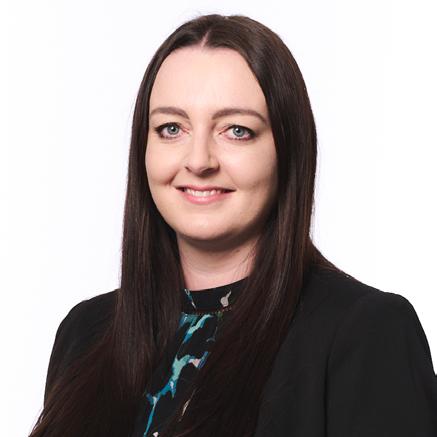
Kerry Hall Head of Burns & Wilcox Lloyd’s Products Burns & Wilcox Global Solutions London, UK
In Q4, rate pressure continues in London. Auto, in particular, remains a concern. While Haulage and Trucking have traditionally been the focus, the past year has seen underpriced fleets undergo rate remediation.
Creativity in solving problems for clients in London remains paramount, with continued development of alternative risk transfer (ART) and long-term structured deals—particularly in the Auto space—providing alternative means of obtaining capacity.
Creativity
in solving problems for clients in London remains paramount.
Claims costs continue to rise. Inflationary pressures, social inflation, litigation, and economic uncertainty all contribute to the backdrop of the current rate environment.
London and Bermuda markets are helping to fill capacity gaps through small but meaningful quota share placements. Additionally, new MGA capacity is demonstrating a creative and inventive approach to supporting more challenging risks, a trend expected to evolve further in 2026.
Contributor:

Declan Durkan Managing Director, Non-Marine Burns & Wilcox Global Solutions London,
UK


Contributor:
Paul G. Smith Group Senior Vice President H.W. Kaufman Group New
York, NY
Click here for contact details >>
Burns & Wilcox sees the “softening hard market” as an opportunity for brokers and agents to grow—particularly in hard-to-place sectors such as Hospitality, Habitational, and Healthcare. In these areas, the non-admitted market offers unmatched value through freedom of rate and form.
Fully completed submissions with detailed notes and photos remain critical to securing underwriter attention and favorable terms, often expediting negotiations. Any signs of moderation are tempered by the reality that terms and conditions remain strict. Capacity is available, but exclusions and deductibles are still common in challenged sectors. Brokers and agents should carefully review all policy language before finalizing coverage.
The P&C market remains unpredictable. Whether or not the Atlantic hurricane season brings significant damage, CAT season is effectively year-round, as seen with the January wildfires in Southern California. The admitted market tends to respond quickly to shifting conditions, while E&S is well-positioned to fill coverage gaps when standard options fall short. Recent events underscore the importance of having flexible solutions in place.
E&S is well-positioned to fill coverage gaps when standard options fall short. Recent events underscore the importance of having flexible solutions in place.
In summary, brokers and agents who are not working with Burns & Wilcox are missing out. The right wholesale partner brings expertise, creativity, and access to global solutions that help meet client needs—especially in a “softening hard market.”
Disclaimer: The above information has been prepared solely for the purpose of sharing general information regarding insurance and business practice management issues. These are just our opinions and are not intended to constitute legal advice or a determination on issues of coverage.

